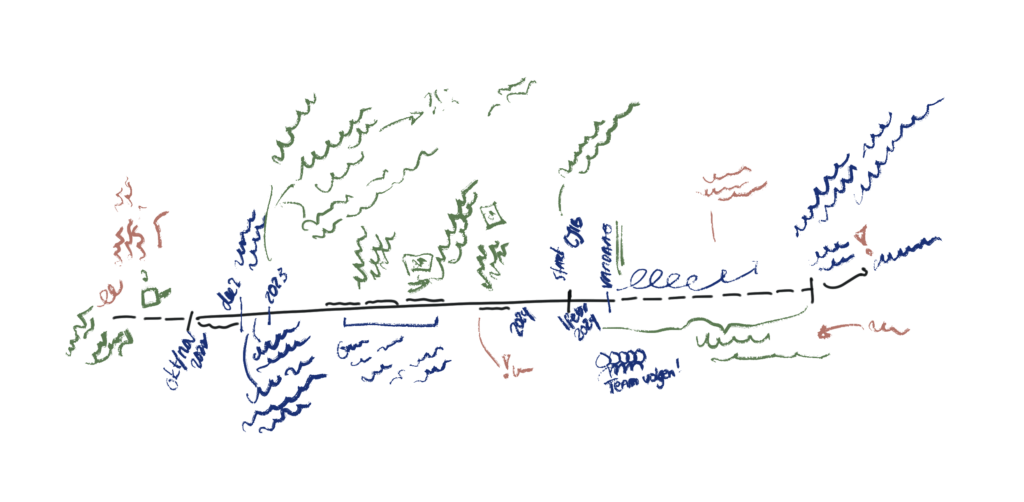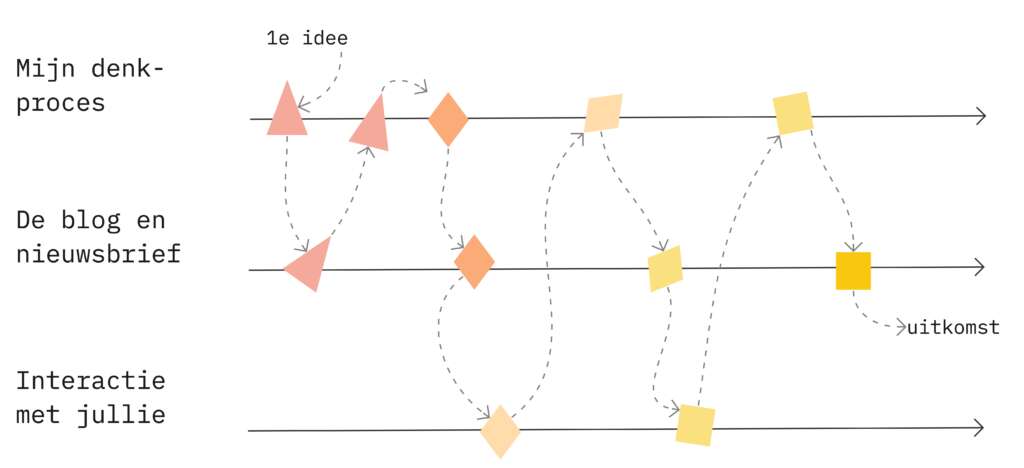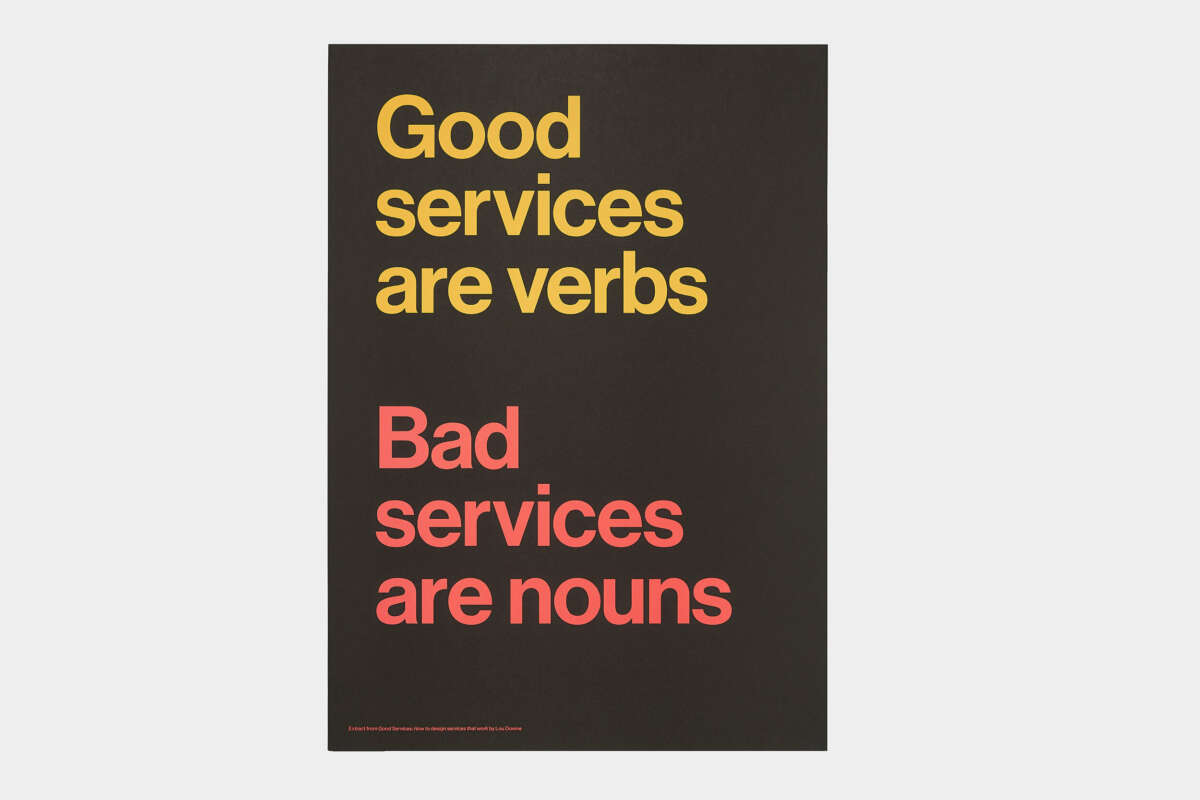In my research, time plays an important role. Or rather, processes that take place over time. To get a better handle on this, I recently took the Process Research course at the Vrije Universiteit of Amsterdam.
In this blog, I share how I plan to use this way of looking at data and knowledge in my research. I see 3 possibilities for that and I will work them out in the coming time.
Actions and processes
But first: what is process research? If you have been following this blog for some time, you may be thinking, “hey, but you did action research, right?” Yes. In fact, you can combine the two perfectly.
If you want to understand something, you have to change it. This is a famous quote from Kurt Lewin, the founder of action research. With action research, you work with participants in real situations. Together you try to change something and reflect on it. Things just rarely go from A to B overnight; it takes time. You can study this change in 2 ways.
- A variants approach looks at the differences between A and B were they 2 separate pictures and thus explains the change.
- A process approach looks at how A becomes B. This is the moving image, the whole film. It is precisely the fluid process between A and B that is interesting here. This process lens allows you to better understand the mechanisms that make change possible.
Action research and process research both assume that organizations are made up of change and that the best way to examine this is from the perspective of the inside. That suits me perfectly, as a public servant who wants to explore how government implementing organizations are transforming into service organizations.
In the Process Research course, I learned about the theory behind this method of research. And in what ways to collect data and analyze it with a process lens to arrive at knowledge. I found it super interesting! If you would like to know more about this, or are looking for reading tips, send me a message.
My research consists of 3 layers and on each layer I think I can use this process approach well. I look at what good services are, how organizations make them and how, in this research, I learn about this along with you.
A good service is a process
Lou Downe writes, in the best book on good service I ever read, that good services are verbs. Often in government we call our service a registry, a portal or – even worse – an abbreviation that leaves no one actually knowing what the person on the other end, the citizen, wants to accomplish with it. What they wanted to do.

A good service is a process with all kinds of actions in it. We visualize this in a customer journey. You can also link the organization’s processes to this. It’s called a service blueprint. So you can see over time how someone experiences a particular government service and what your organization does and organizes for it.
In my research, I look at what constitutes good service. I am doing that this year in a case study at the CJIB, in the Clustering National Debt Collection program. Here I look at what a good service looks like for people who have to pay a debt to the government.
I also look one layer above this. I look at how the government is redesigning this service and thereby changing it.
Redesigning a service is also a process
I participate in the team working to improve this service. I do that because I want to learn how organizations get better at making services that are good for people.
To track the growth in government in this, I record events over time. Together with the team I follow, I reflect on past events. For example, the other day we all made a timeline of the important moments in the project. In interviews, I then ask how people proceeded around those events. What the strategy is, what they care about and how they make choices. I’ve blogged about this method before: visual interviewing.
I also made my own timeline, because I am part of the team myself and think/work with them how the service can be better. This is my timeline, redrawn.

I’m still figuring out how to properly anonymize the data, but this is a little too much of it, I think, haha.
Later, I will put the timelines and stories side by side and you can see from multiple perspectives how the service is created and the organization(s) grow. Together we can then see what mechanisms are involved. And, of course, I hope to learn lessons that can work in other places.
My promotion is also a process
You can follow this research in a transparant way. I regularly show what it looks like behind the scenes. I do that through this blog and through a monthly newsletter. I get regular feedback from you on what I do and I find that very valuable. This open way of working, I call it open action research, is also a process and this is the third layer in my research.
The way I learn, collect and analyze data and translate this to new knowledge together with your input, can also be drawed out as a process. I am now writing a paper on my conceptual framework for the research. Secretly, all kinds of building blocks of this have been on this blog for a long time. Sometimes I don’t even realize it myself. Retrospectively, you can read back the entire thought process, the knowledge in the making, here. For example, this process looks like this:

In the coming time, I will work on this approach and, with the team and together with you, I will analyze the initial findings. I am very curious to see what we will learn from it!
Continue reading?
- Coghlan, D. (2019). Doing Action Research in Your Own Organization. SAGE.
- Langley, A. (2007). Process thinking in strategic organization. Strategic Organization, 5(3), 271-282.
- Tsoukas, H., & Chia, R. (2002). On Organizational Becoming: Rethinking Organizational Change. Organization Science, 13(5), 567-582.
